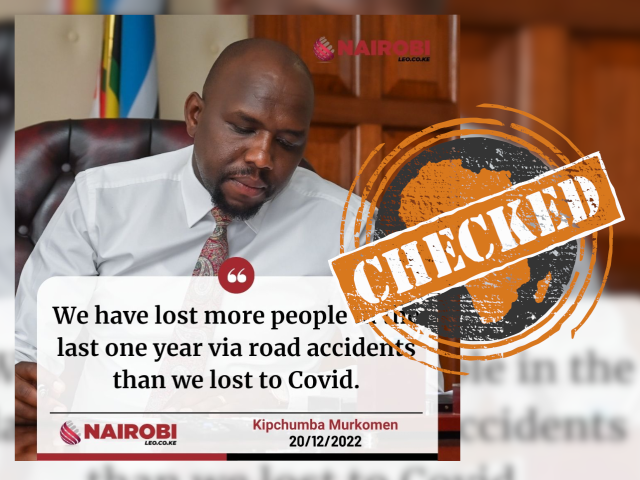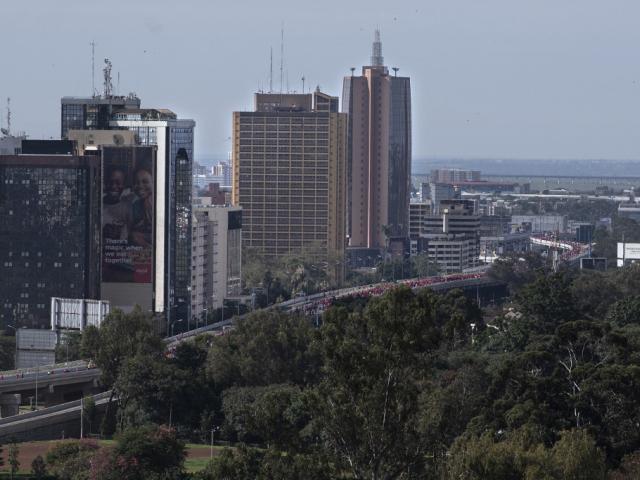IN SHORT: Some of Kenya's roads have been damaged by flooding as heavy rains hit the country in early December 2023. But this image of a damaged section of an elevated motorway in Kenya, built during the administration of former president Uhuru Kenyatta, has been altered.
An image circulating on Facebook appears to show a damaged section of an elevated highway. The cracked road is surrounded by skyscrapers and vehicles with Kenyan licence plates.
The image is posted with the claim that it shows a damaged section of the Nairobi expressway – a motorway built during former president Uhuru Kenyatta’s regime. Kenyatta was in power from 2013 to 2022. He commissioned the expressway in July 2022.
The image was shared as the country experienced heavy rains in late November and early December 2023.
“Express Way. Uhuru's most hyped projects was a shoddy one. Billions were pocketed by the handshake government which was run by two imaginary brothers. An educated person will insult me here simply because he has been ‘blinded’ by that family from Bondo,” reads one caption on Facebook.
The handshake refers to the truce between former political rivals Kenyatta and the opposition leader Raila Odinga, who began working together in 2018.
Odinga’s rural home is in Bondo in Siaya county in western Kenya.
But is the claim accurate? We checked.

Altered photo
A reverse image search finds the image on the Kenyan media outlet Nation Africa.
The website describes it as showing “vehicles driving along the Nairobi Expressway on May 14, 2022”. The photo was published on 1 June 2022.
The photo circulating on Facebook and the one published by the Nation are similar. But the news publication's photo does not show any cracks in the motorway.
The cracks on the motorway have been digitally added to the image.
Republish our content for free
For publishers: what to do if your post is rated false
A fact-checker has rated your Facebook or Instagram post as “false”, “altered”, “partly false” or “missing context”. This could have serious consequences. What do you do?
Click on our guide for the steps you should follow.
Publishers guideAfrica Check teams up with Facebook
Africa Check is a partner in Meta's third-party fact-checking programme to help stop the spread of false information on social media.
The content we rate as “false” will be downgraded on Facebook and Instagram. This means fewer people will see it.
You can also help identify false information on Facebook. This guide explains how.





Add new comment